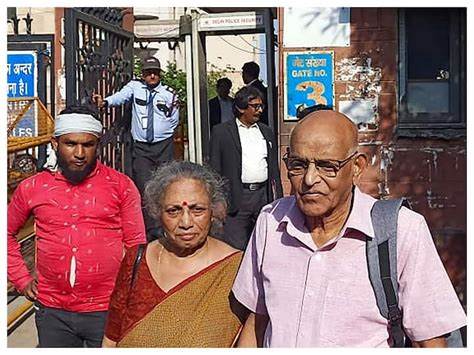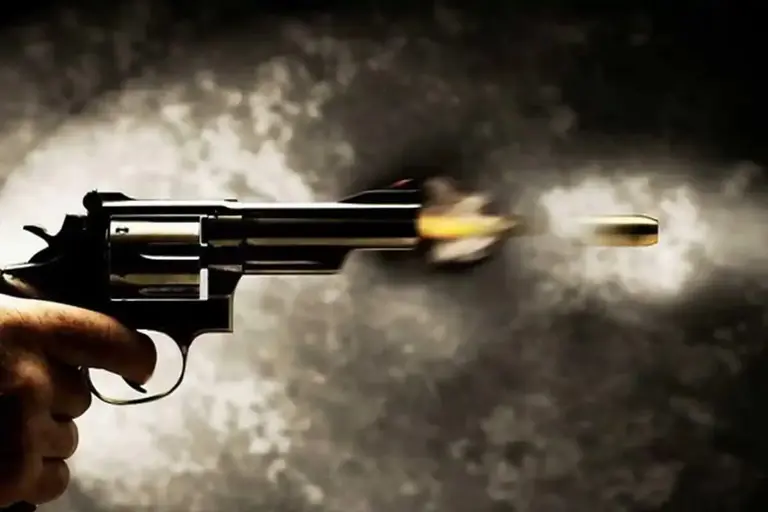Tattoo, Stolen Wireless Led to Techie’s Murderers. And Then Dots Joined to TV Journo’s Killing

Tattoo, Stolen Wireless Led to Techie’s Murderers. And Then Dots Joined to TV Journo’s Killing
The recent breakthrough in the long-pending cases of the tragic killings of IT professional Jigisha Ghosh and TV journalist Soumya Vishwanathan highlights the meticulous investigative efforts of the Delhi Police. According to news agency PTI, the use of critical evidence, including an identifiable hand tattoo, a stolen wireless set belonging to a policeman, and crucial CCTV footage, played a pivotal role in cracking the case and ultimately leading the investigators to the perpetrators.
Ravi Kapoor, Amit Shukla, and Baljeet Malik, who were arrested for the murder of Jigisha Ghosh in 2009, later confessed to their involvement in the killing of Soumya Vishwanathan in 2008. Subsequently, a Delhi court convicted the four individuals, Kapoor, Shukla, Malik, and Ajay Kumar, for an organized crime syndicate, charging them with murder and other related offenses in connection with the killing of Vishwanathan.
Additionally, the fifth accused, Ajay Sethi, was convicted under section 411 (dishonestly receiving stolen property) and provisions of the Maharashtra Control of Organised Crime Act (MCOCA) for conspiring and aiding organized crime and receiving the proceeds of organized crime.
The arrests and subsequent convictions underscore the Delhi Police’s commitment to ensuring justice for the victims and their families. The successful culmination of these cases serves as a testament to the dedication and persistence of law enforcement authorities in bringing the perpetrators of heinous crimes to justice and upholding the rule of law. Such outcomes also offer a semblance of closure for the affected families and serve as a reminder of the imperative role played by law enforcement agencies in ensuring public safety and security.
The harrowing incident involving the looting and murder of Jigisha Ghosh in March 2009 underscores the vital role of effective investigative techniques and the dedication of law enforcement officers in ensuring the swift resolution of criminal cases.
Atul Kumar Verma, the former investigating officer of the case, highlighted the initial breakthrough in the investigation, which stemmed from the identification of crucial evidence captured on CCTV footage. The footage revealed one of the accused utilizing Jigisha’s debit card, with a distinct tattoo visible on his hand, while another was captured carrying a wireless set and wearing a cap.
Utilizing the intricate human intelligence network of the Delhi Police, the investigative team meticulously pursued the case, ultimately leading them to the residence of Baljeet Malik in Masoodpur. Subsequently, Ravi Kapoor and Amit Shukla were arrested in connection with the case. Notably, Malik’s distinctive hand tattoo, as well as Kapoor’s possession of a wireless set, which was reportedly snatched from a police officer, provided critical evidence in linking the perpetrators to the heinous crime.
The detailed accounts provided by the investigating officer shed light on the meticulous efforts undertaken by the Delhi Police in unraveling the complexities of the case and securing the necessary evidence to bring the perpetrators to justice. Such meticulous investigative work serves as a testament to the unwavering commitment of law enforcement authorities in their pursuit of justice, accountability, and the safeguarding of public safety.
The revelations made by Atul Kumar Verma, the former investigating officer of the Jigisha Ghosh murder case, shed light on the interconnected nature of criminal activities, as Ravi Kapoor’s confession unveiled the involvement of the perpetrators in the murder of another young woman at Nelson Mandela Marg, a location in close proximity to Vasant Vihar. This disclosure prompted immediate action from the then Deputy Commissioner of Police (South), HGS Dhaliwal, who swiftly established a dedicated team, led by then ACP Bhisham Singh, to investigate both cases concurrently.
According to Singh, the focus of the investigation primarily revolved around gathering essential forensic evidence, given the initial confession made by the accused regarding the Soumya Vishwanathan murder case. The collection of comprehensive forensic evidence posed a significant challenge for the investigative team, requiring meticulous attention to detail and a thorough approach to ensure a robust case was built against the perpetrators.
The detailed account of the events leading up to the tragic killing of Soumya Vishwanathan suggests that the perpetrators were allegedly intoxicated during the incident, with Ravi Kapoor driving a Maruti Wagon R car, accompanied by Amit Shukla, Baljeet Malik, and Ajay Kumar in the vehicle. These crucial details underscore the comprehensive approach taken by the investigative team in piecing together the sequence of events, thereby contributing to the pursuit of justice and the eventual apprehension of the individuals involved in the heinous crime.
The detailed narrative provided by Officer O P Thakur offers a chilling account of the tragic events leading to the untimely demise of Soumya Vishwanathan. According to the description, on the night of September 30, the perpetrators encountered Soumya while she was driving alone in her Maruti Zen, en route to her residence in Vasant Kunj from the TV Today office situated in Karol Bagh. The accused, upon noticing the lone woman driver, accelerated their vehicle, attempting to intercept her car. When their initial efforts to stop her went in vain, Ravi Kapoor allegedly fired a fatal shot, which tragically struck Soumya in the temple, causing her immediate death.
Following the fatal incident, the accused fled the scene, only to return approximately 20 minutes later to assess the situation. Upon noticing the presence of police personnel, they hastily retreated from the scene, attempting to evade the authorities. The account provided by the investigating officers highlights the meticulous reconstruction of the events, with the conviction resting on crucial factors such as the recovery of the weapon of offense, forensic evidence, and the alignment of the sequence of events with the confession statements provided by the accused.
The successful conviction in the case stands as a testament to the dedication and meticulous efforts of the investigative team in building a comprehensive case based on substantial evidence and eyewitness accounts, thereby ensuring that justice was served for the untimely and tragic loss of Soumya Vishwanathan.





